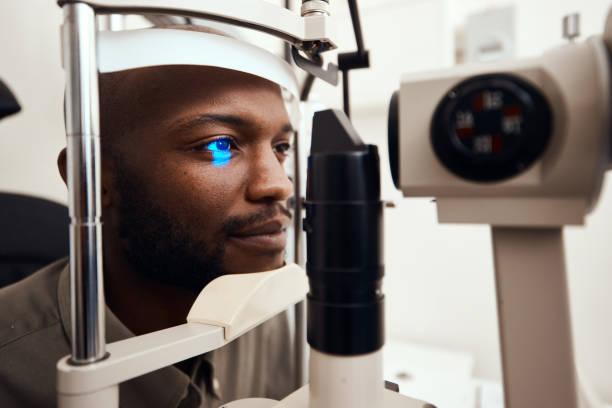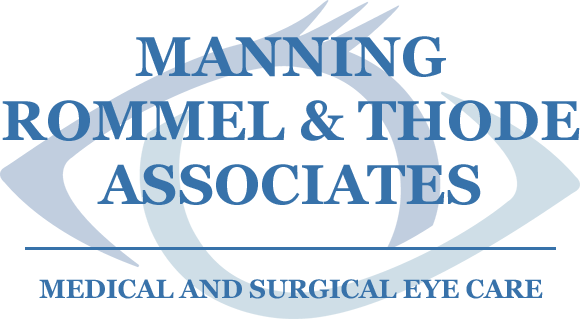From smartphones to laptops and everything in between, in today’s digital age, our eyes are constantly exposed to screens. With this increased screen time, our eye health has become more important than ever before. Fortunately for us, the next generation of eye health solutions is here to help us see clearly.

It’s time to embrace the future of eye care! Stay tuned to discover how these advancements can benefit you and your loved ones by helping you see the world in all its clarity and brilliance.
The importance of eye health
Our eyes are one of the most important organs in our body; they allow us to see and experience the world around us. However, with technological advancements over the years, our eyes are facing brand new challenges. Extended screen time can cause a range of issues, including eye strain, dry eyes, headaches, and even vision problems. In addition, our eyes become more susceptible to conditions like glaucoma and macular degeneration as we age.
That being said, it is not just screen-related. The next generation of eye health solutions will also include breakthroughs in the early detection and management of conditions such as glaucoma and macular degeneration. With improved accuracy and efficiency, these solutions will empower individuals to take proactive steps toward maintaining optimal eye health for themselves.
As such, it’s important to prioritize eye health and take the necessary steps to maintain good vision. This includes regular eye exams, adopting healthy habits like proper lighting and screen positioning, and staying up-to-date with the latest advancements in eye health solutions.
Whether you’re a digital nomad, a gamer, or an office professional, the next generation of eye health solutions has something for everyone. From blue light filters to vision correction technology, these cutting-edge products and treatments are guaranteed to transform how we care for our eyes.
Traditional eye health solutions and their limitations
For many years, traditional eye health solutions primarily included corrective lenses or surgery. Glasses and contact lenses are still the most common means of vision correction, and options like bifocals, trifocals, and progressive lenses are available as well to address various needs. Additionally, LASIK surgery has become a popular option for those looking to permanently correct vision problems.
While these solutions have been effective for many, they do have limitations. Glasses and contact lenses can be uncomfortable and inconvenient for some, and surgery always comes with risks and complications. Furthermore, these traditional solutions do not address the common underlying causes of eye problems, such as extended screen time or genetics.
Fortunately, the next generation of eye health solutions goes beyond traditional methods in order to address a range of eye health issues. Advanced technologies are being developed for a multitude of reasons, including to improve vision correction, monitor eye health, and even prevent and treat conditions like glaucoma and macular degeneration.
Advanced technologies in eye health
As technology evolves, so does the next generation of eye health solutions. In the future, we can expect gene therapy and stem cell treatments to address the genetic causes of eye conditions.
Additionally, we will see even more advanced wearable devices, AR solutions, and telemedicine technologies.
Telemedicine and Remote Eye Health Monitoring
Unlike ever before, telemedicine and remote monitoring technologies are also being developed to improve access to eye care. These solutions allow patients to receive eye exams and consultations from the comfort of their own homes, which helps reduce the need for in-person visits and improves access to care for those in remote or underserved areas.
Additionally, telemedicine and remote monitoring can be used for ongoing eye health management, which allows doctors to monitor patients’ eye health over time and provide personalized recommendations for maintaining good vision overall.
Wearable Devices for Eye Health Monitoring
The advent of wearable devices has completely changed various aspects of our lives, and eye health is no exception. These devices provide valuable insights and actionable data for both individuals and healthcare professionals. They are being developed to monitor eye health in real-time and have the ability to track eye movement, measure intraocular pressure, and capture images of the retina. They can even provide personalized feedback and recommendations for maintaining good eye health, such as reminders to take breaks from screen time or to adjust the lighting if possible. In turn, this allows for early detection and treatment of conditions like glaucoma and macular degeneration.
Smart glasses incorporate advanced sensors to measure eye strain and fatigue. By analyzing blinking patterns, eye movement, and other factors, they can detect early signs of eye strain and offer personalized recommendations to reduce discomfort. Additionally, they can remind you to take breaks from screens, practice eye exercises, and maintain proper posture, all of which contribute to improved eye health.
Another development is the integration of contact lenses with sensors and microchips. These smart lenses can monitor intraocular pressure, which is a critical parameter for glaucoma management. By continuously measuring this pressure, they can provide early warnings of potential complications and assist with timely intervention, which can potentially prevent vision loss.
Wearable devices also offer the ability to measure several biometric indicators, such as heart rate and sleep patterns, both of which are closely linked to eye health. By capturing this data, you’re able to gain a deeper understanding of how your lifestyle choices impact your eyes and thus make informed decisions to protect your vision.
The future of eye health monitoring is bright! Wearable devices are poised to play a significant role in preventive care and the early detection of eye conditions. By integrating these technological advancements seamlessly into our daily lives, these devices offer a convenient and proactive approach to maintaining optimal eye health.
Augmented Reality in Eye Health
Augmented reality (AR) technology isn’t just limited to gaming and entertainment these days; it has found its way into the realm of eye health. AR overlays digital information on the real world and can be used to both enhance vision and reduce eyestrain. The use of AR applications has the potential to completely restructure how we diagnose, treat, and manage eye conditions, all while providing enhanced visualization and real-time guidance for healthcare professionals.
One of the key purposes of AR in eye health is during surgical procedures. By overlaying digital information onto the surgeon’s field of view, AR can assist with precise incisions, accurate implant placements, and overall improved surgical outcomes. Surgeons can also visualize critical structures in real-time, which helps reduce the risk of complications while also enhancing patient safety.
On the other hand, AR also holds promise in the field of low-vision rehabilitation. AR devices or glasses can help individuals with visual impairments navigate their surroundings much more effectively. Features like object recognition and voice-guided navigation can enhance independence and improve the quality of life for those with low vision. These glasses also have the capability to adjust the focus of images, help reduce eye strain, or even provide visual aids for those with low vision. They can also be used for eye exercises and therapy to help improve eye coordination and reduce the risk of conditions like lazy eye.
The integration of AR into eye care not only enhances clinical outcomes but also opens up new possibilities for patient-centered care and improved accessibility. AR technology enables modern methods of patient education, understanding, and engagement. By visualizing eye conditions and the impact they have on vision, patients can better understand their diagnosis and treatment options. It also helps to empower them to make informed decisions for their eye health and actively participate in their eye care journey.
The next generation of eye health solutions is going to completely change how we care for our eyes—in a good way. From wearable devices to AR and telemedicine, these cutting-edge developments will provide new opportunities for early detection, treatment, and prevention of various eye conditions. By embracing these changes, we can ensure that everyone has access to the best possible eye care, improving quality of life and reducing the risk of vision problems.
That being said, when in doubt, contact your physician to learn more about what’s best for you.
Give Manning, Rommel, & Thode Associates a call to learn more today!
